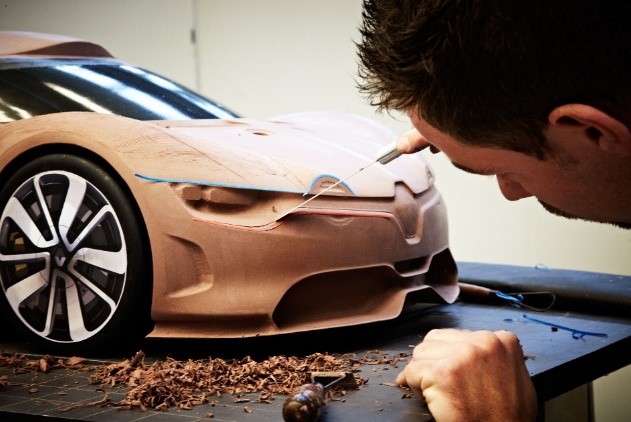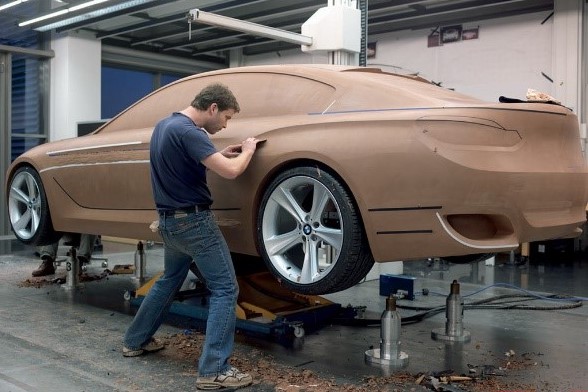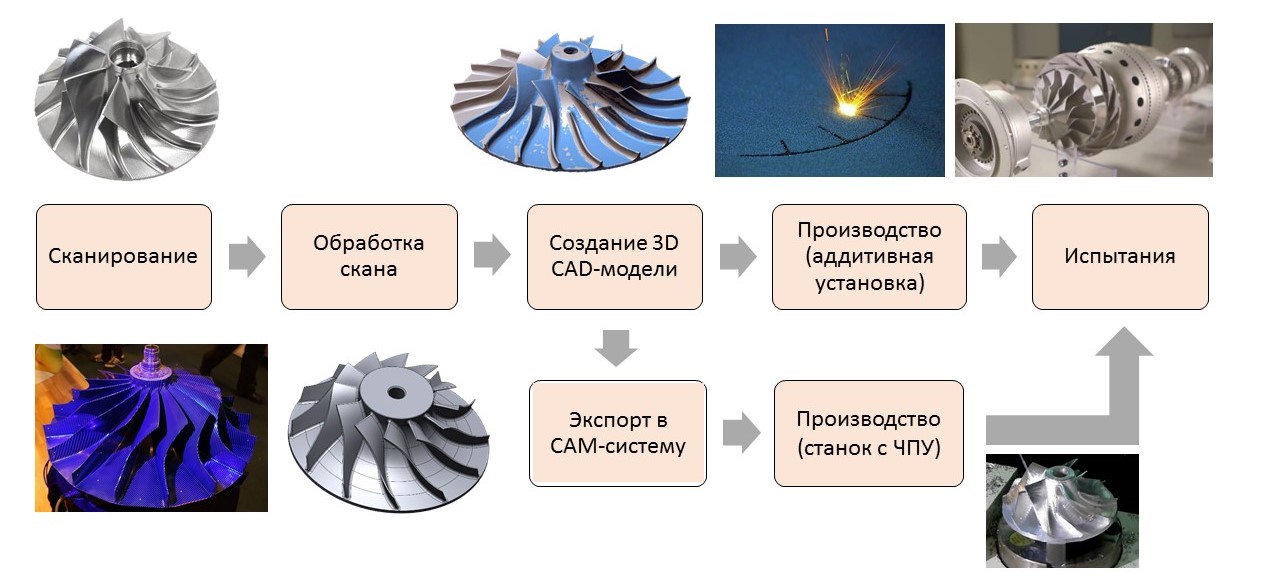Reverse engineering in production using 3D scanning

Interview with an expert on 3D-technologies Georgy Kazakevich
- If we want to understand what reverse-engineering is, what do we need to know first of all?
')
- First of all, you need to figure out what the task of 3D scanning is . The term is actually vague, since 3D scanning as such means simply collecting the information that needs to be processed. Raw data does not give us any practical result.
Remember what computer games were about fifteen or twenty years ago: a few pixels jump on a flat screen. Computers of that time could not calculate information by more than these few pixels. Over the years, computing power has increased incredibly. Any of us in our pocket has a mobile phone that is more powerful than a computer that counted on the flight of Americans to the moon. So now, sitting at your desk, you can handle huge amounts of information. And 3D scanning, as I said, is nothing more than information gathering.
- For what purpose do we collect this information?
- To solve problems in two directions - geometry control and reverse engineering (reverse engineering). These are two completely independent processes, and they are usually occupied by different departments. Reverse engineering is the mission of the design department. It is used if you need to scale or change the geometry of the product, and the design documentation is missing. The object is scanned, and on the basis of the scan data we get a CAD model that can be edited. That is, reverse engineering is, conditionally speaking, the digitization of a material object. But this is not only borrowing, but also the ability to transfer a hand-made object to the drawings.

Reverse engineering design in the automotive industry
- So, reverse engineering is not always copying?
- Yes, not always. And here we are dealing with industrial design. Take the automotive industry . First, the car body is created by designers. Secondly, it is very important that the air flow is properly distributed around the car - this affects the fuel economy. Naturally, there are digital models that allow you to produce blowing in a virtual wind tunnel and check the body for streamlined. But any digital model is always an assumption. Cheaper scanning technology allows large manufacturers, such as BMW or Mercedes, to use it for the development of new buildings. They recreate a full-size model of the machine and blow it in a real pipe. After that, they can carry out some small additional processing in order to achieve an optimal airflow pattern. Then the body is simply scanned and transferred to the CAD / CAM system. That is, from a real object we get a virtual one, which is then replicated. This is just a clear example of the fact that reverse engineering is not just copying.
But if you talk about reverse engineering somewhere, there will definitely be people who will say: “They do this in China. This is bad". Why is bad, they can not explain, and it makes no sense to argue with them. You just need to look at the indicators. The fact is that China is now one of the fastest growing global economies. The last ten years, this country ranks first in the world in the use of 3D-scanners .
Take the same BMW. You do not have drawings, but you can get them using a 3D scanner. Yes, of course, the method of production you will not be known, it will have to develop. And this is another answer to those who say that reverse engineering is just copying. In fact, this is just a hint in which direction to move. A normal company is very important to develop a production technology, and it costs a lot more money than creating a drawing.

Reverse engineering process
“Let's talk about the reverse engineering process.”
- It is clearly represented in the diagram, starting with scanning and ending with tests of the obtained part. Reverse engineering is, of course, not just receiving drawings. And it's not so much getting the drawings, as making a certain detail on them and understanding that you have achieved the goal.
As an example, we took the impeller, which is a component of the node used in oil and gas enterprises. Suppose this site is foreign-made (which is found all the time). Since the oil and gas sector is now under sanctions, many enterprises are trying to independently produce spare parts for devices that used to be supplied from abroad. So, we have a knot, it works properly, but its impeller has broken. And we cannot buy a new one. If you buy domestic, then you have to change the entire periphery around. Accordingly, if there is the same unit with a serviceable impeller, we can scan it and create a 3D model in CAD. Then, depending on the desired production method, either export the model to the CAM system in order to process it in a standard way on a CNC machine, or transfer it to an additive unit. In the second case, as we see, the production cycle is reduced. In addition, it should be understood that exporting to the CAM system and creating a CAM model does not occur in automatic mode (although there is special software for this). This is all the labor of a person.

Lower part of the pump casing and its CAD model
- Please tell us about your practical experience in reverse engineering.
- I will mention several interesting projects carried out by experts from iQB Technologies.
Here, for example, the pump housing. It is inside some kind of assembly. There were problems with these cases - they cracked and burst. Buying a new one means changing the entire periphery, which is naturally much more expensive. It turned out that the lower part, on which the pump stands, bursts, probably because of too large loads or low-quality metal. At the same time, neither the inner nor the upper parts were damaged. At the request of the customer, we scanned the lower part of the body and made it a CAD model. Based on this model, an enterprise makes its own parts on its own and uses it as a spare part.

Reverse transmission case design
One more example. The customer provided us with a transmission case. The task was to obtain a CAD-model and drawings with a real-life transmission, which we did.

3D scanning and receiving a 3D model of a lamp post base
And here you see a lamp post base, familiar to all Muscovites. There is a project to replace all such bases in Moscow. It was necessary to obtain a model of the modern basement and make certain changes to it. We created a 3D model and completely digitized it. Why was this done? It was necessary to keep the exact dimensions, since there is an electrician and various additional equipment under the base. In addition, fasteners that are closed on the pole will not be replaced. Thus, the project of a new base with the use of reverse design allowed to minimize the changes and, accordingly, reduce the costs of them.

Motorcycle engine guard
And finally, such a project. Our customers were collectors of rare motorcycles . If a breakdown occurs, parts must be ordered from abroad - in Russia it is almost impossible to buy them. We received spare parts similar to damaged ones (taken from another motorcycle of the same model), or parts that often break. We scanned these parts, built a CAD model on them, and now they are made in Russia.
To summarize: reverse engineering is when we have something physical, but not digital, and we transfer the object from the physical world to the digital one, where we can already refine it, prepare for something, or simply send it to production.
IQB Technologies invites you to the Metalworking-2019 exhibition at Expocentre Fairgrounds! We will present unique 3D solutions at our booth in Pavilion 5.1, and also hold a practical conference with a demonstration of 3D scanning and modeling (May 29, from 11:00 to 14:00). Details and registration for the conference link .
Source: https://habr.com/ru/post/448986/
All Articles